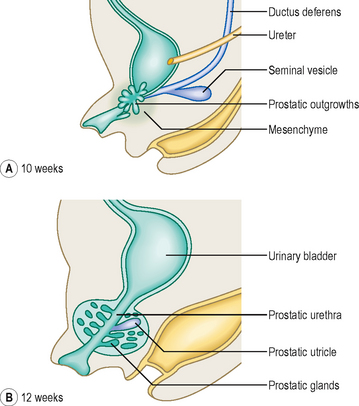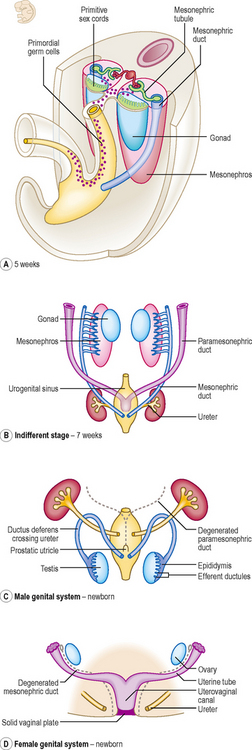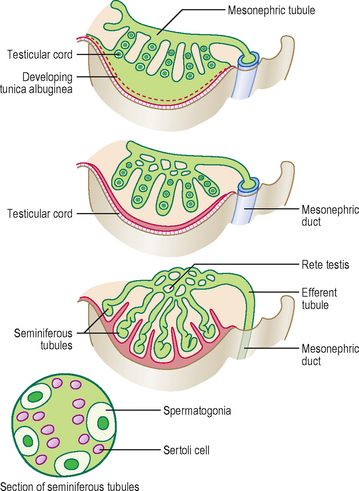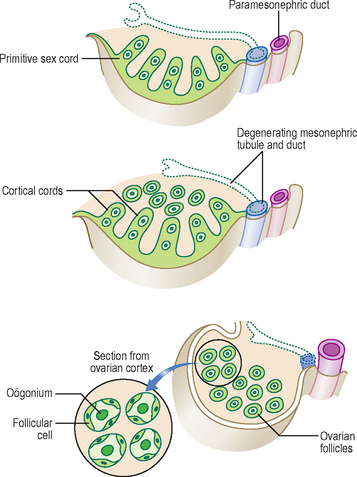Chapter 9 The reproductive system
Development of the indifferent gonad
The gonads develop from the intermediate mesoderm that is situated in the paired longitudinal urogenital ridges, the more medial part of these ridges being the gonadal ridges. In the sixth week primordial germ cells migrate from the wall of the yolk sac via the dorsal mesentery of the hindgut to occupy the gonadal ridges. The arrival of these cells induces the cells in the ridges to form primitive sex cords (derived from the mesonephros and overlying coelomic epithelium) (Fig. 9.1A). At this stage the gonad is indifferent or uncommitted (Fig. 9.2), and consists of an outer cortex and an inner medulla. During the next week the male and female gonads begin to differentiate (Fig. 9.1B-D). If germ cells fail to migrate to the gonadal ridges the gonads do not develop.
Genital ducts
Initially, two pairs of genital ducts arise in both male and female: the mesonephric and paramesonephric ducts (Fig. 9.1B–D).
In the male, the mesonephric duct loses its urinary function once the mesonephros is superseded by the metanephros. The mesonephric duct becomes the ductus deferens and the epididymis (the main genital ducts in the male), opening into the urogenital sinus (the anterior part of the cloaca) (Fig. 9.1). The secretion of testosterone by the interstitial Leydig cells from week 8 stimulates the mesonephric ducts to differentiate into their adult derivatives. Each seminal vesicle buds out from the distal mesonephric duct. The prostate arises as a bud from the urethra (Fig. 9.5). The regression of the paramesonephric ducts in the male is stimulated by the anti-mullerian hormone, secreted by the Sertoli cells. The old name for the paramesonephric duct was mullerian duct; the old name for the mesonephric duct was wolffian duct.

Fig. 9.5 Development of the accessory glands of the male genital system at 10 weeks (A) and 12 weeks (B).
In the female, the mesonephric duct is not involved in genital duct formation. In the absence of anti-mullerian hormone and testosterone the mesonephric ducts regress in the female. The paramesonephric duct system arises as a pair of longitudinal invaginations (Figs 9.1 and 9.2
Stay updated, free articles. Join our Telegram channel

Full access? Get Clinical Tree






